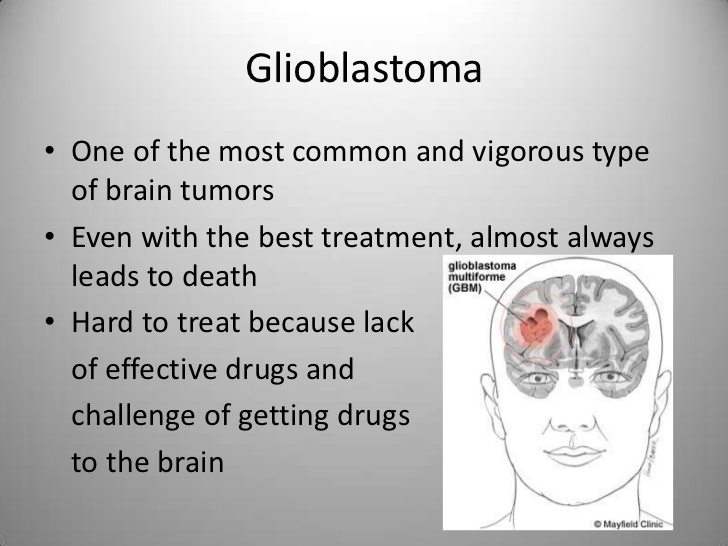Compliments of the season. A political figure suffering from Glioblastoma recently died in another country. Kindly share information about this type of brain cancer to enlighten your teeming readers.
Abraham K.
Thanks Abraham for your question which was asked by about 10 readers of this column via email. As has been defined, Glioblastoma is an aggressive type of cancer that can occur in the brain or spinal cord. Glioblastoma forms from cells called astrocytes that support nerve cells. Glioblastoma can occur at any age, but tends to occur more often in older adults.
Causes of Glioblastoma?
The causes of glioblastoma are largely unknown. While research suggests that approximately 5 percent of all glioblastomas are caused by hereditary conditions, the remaining 95 percent are not attributed to any specific cause. Glioblastoma cells have more genetic abnormalities than the cells of other types of astrocytoma brain cancer. As a result, researchers believe that several different genetic mutations are involved in the development of these cancers. These genetic mutations can be caused by:
- Inherited DNA defects.
- Cumulative effects of exposure to chemicals and other carcinogens.
- High-dose exposure to ionizing radiation.
- Additional triggers that have yet to be identified.
Glioblastoma multiform, or GBM, is a type of tumor that begins in the brain or spinal cord, and these types of tumors are known as primary brain tumors.
Symptoms relate to the location of the tumor, increased pressure on parts of the brain near the tumor, and size of the tumor. Symptoms vary from person to person, depending on these factors. As the cancer grows, the symptoms will multiply, affecting more body functions.
Signs and symptoms of Glioblastoma?
The most common signs and symptoms of a newly diagnosed glioblastoma are:
Headaches, combined with nausea and vomiting. Sometimes dizziness or vertigo occurs. These tend to occur in the early morning and often become persistent or severe.
Seizures. The type of seizures depend on where in the brain the tumor is located. They can be partial (limited to one part of the brain with a corresponding small part of body affected), complex partial (short seizures that the person does not remember), or generalized (affect both sides of the brain and involve loss of consciousness).
Focal Neurologic Deficits which can manifest as compromised nerve, brain, or spinal cord dysfunction, and can affect many body functions. Key examples include:
- Movement difficulties, such as paralysis, weakness, loss of muscle control, and involuntary movements, such as tremor
- Balance difficulty and clumsiness
- Sensation changes, including numbness or decreased feeling in parts of the body
- Vision abnormalities, such as double vision, blurred vision, and loss of peripheral vision
- Not noticing a part of the body or surroundings, known as “neglect”
- Loss of coordination or loss of motor control
- Speech or language problems, such as not understanding or producing words.
- Difficulty walking because of weak arms or legs
- Loss of appetite
Diagnosis
- Neurological exam: During a neurological exam, a doctor will ask about signs and symptoms. He or she may check vision, hearing, balance, coordination, strength and reflexes. Problems in one or more of these areas may provide clues about the part of the brain that could be affected by a brain tumor.
- Imaging tests: Imaging tests can help a doctor determine the location and size of the brain tumor. MRI is often used to diagnose brain tumors, and it may be used along with specialized MRI imaging, such as functional MRI and magnetic resonance spectroscopy.
- Other imaging tests may include CT and positron emission tomography.
- Removing a sample of tissue for testing (biopsy).
Treatment options
- Surgery to remove the glioblastoma. A brain surgeon (neurosurgeon) will work to remove the glioblastoma. The goal is to remove as much of the tumor as possible. But because glioblastoma grows into the normal brain tissue, complete removal isn’t possible.
- Radiation therapy uses high-energy beams, such as X-rays or protons, to kill cancer cells.
- Chemotherapy uses drugs to kill cancer cells.
- Tumor treating fields (TTF) therapy. TTF uses an electrical field to disrupt the tumor cells’ ability to multiply.
- Supportive (palliative) care. Palliative care is specialized medical care that focuses on providing relief from pain and other symptoms of a serious illness. Palliative care specialists work with the patient and his/her family to provide an extra layer of support that complements ongoing care.

 Join Daily Trust WhatsApp Community For Quick Access To News and Happenings Around You.
Join Daily Trust WhatsApp Community For Quick Access To News and Happenings Around You.


